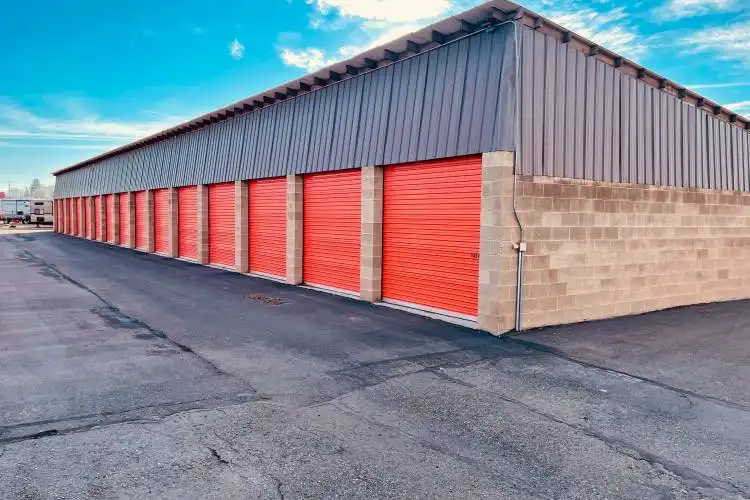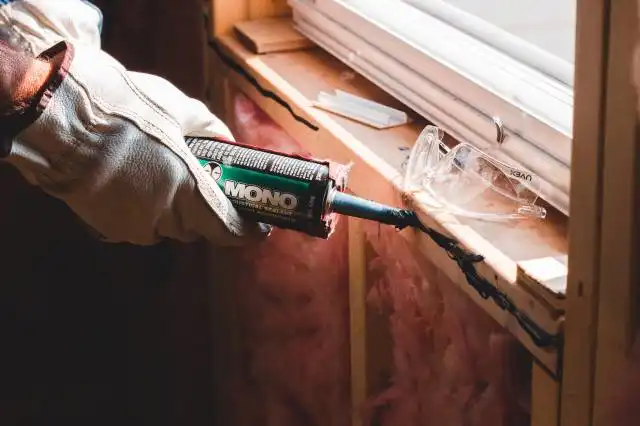Start a Pop-Up Restaurant Business
Turning Culinary Dreams into Reality with Pop-Up Restaurants
| Updated


POP-UP RESTAURANT BUSINESS
Be the leader of a culinary revolution with a pop-up restaurant business! Pop-up restaurants are temporary eateries that spring up in unique and unexpected venues ranging from rooftops to empty warehouses. This quick-on-its-feet business concept not only pushes the creativity on the plate but also in the venue, offering a novel dining experience that traditional brick-and-mortar restaurants can't touch. You'll serve delicious food in an immersive, ever-changing environment that has your customers always eager for your next exciting location!
Jump to Business Plan
RELATED BUSINESS IDEAS
Browse ALL Rental & Delivery Services Business Ideas
Discover Your Perfect Domain
Unlock the door to your online success with our hand-picked selection of premium domain names. Whether you're starting a new venture or rebranding an existing one, the right domain can set the tone for your digital presence. Browse through our curated list, each with its unique potential to enhance your brand's visibility and credibility.
POP-UP RESTAURANT MINI BUSINESS PLAN
This a quick reality check to help you identify the strengths and weaknesses of your business concept before you dive in.
Expected Percent Margin:
- Gross Margin: 60-70%
- Net Profit Margin: 6-9%
Earnings Expectations:
- Daily Earnings: $300 - $500
- Weekly Earnings: $2,100 - $3,500
- Monthly Earnings: $9,000 - $15,000
- Annual Earnings: $108,000 - $180,000
Actions to Hit Those Numbers:
Food and Beverage Sourcing:
- Initial Investment: Roughly $5,000-$10,000 for quality ingredients and beverages.
- Supplier Network: Cultivate relationships with local producers and suppliers.
Marketing and Customer Acquisition:
- Social Media: Post mouth-watering photos and interact with followers daily to create anticipation.
- Local Advertising & Partnerships: Collaborate with local businesses. Participate in local events.
Cook and Customer Experience:
- Chef: Employ a reliable, talented chef who can churn out stellar dishes every time.
- Front of House Staff: Have 2-3 vibrant, fast and friendly staff to handle service and customer interaction.
Cost Control:
- Venue Rent: Seek reliable, inexpensive pop-up locations. Consider partnering with established businesses during their off-hours.
- Utilities and Maintenance: Budget to accommodate utilities and cleaning services.
Business Operations:
- Operating Hours: Open 4-5 days a week, consider operating during lunch and dinner hours.
- Transaction Volume: Aim for about 20-30 transactions per day with an average spend of $30-$50 per customer.
Remember, these are generalized estimations and actual results can vary based on location, customer preferences, economic conditions and unique business strategies. Please consider hiring a financial advisor for personalized financial recommendations.
NOT WHAT YOU HAD IN MIND? Here are more ideas



Browse ALL Rental & Delivery Services Business Ideas
Grab Your Business Website Name
Before you get caught up in the whirlwind of setting up your business, invest in a domain name. It's a small but significant step that lays the foundation for your brand and makes it easier for customers to find and trust you. Just like you wouldn't build a house without securing the land first, don't build a business without securing your domain name.
"Why? Can't that wait?" Here's why it shouldn't
Overview of 9 Steps
Starting a pop-up restaurant can be an exciting and rewarding endeavor. A pop-up restaurant is a temporary restaurant, usually located in a public space, such as a park, beach, or a vacant storefront. It is a great way to test out a restaurant concept without the long-term commitment of a traditional restaurant. Starting a pop-up restaurant business can be a great way to make money and gain experience in the restaurant industry. This article will provide an overview of the nine steps needed to start a pop-up restaurant business, including determining if the business is right for you, naming the business, and tips on how to make money.
Step 1: Determine if a Pop-Up Restaurant is the Right Endeavor
Breakdown of Startup Expenses
Starting a pop-up restaurant business can be a costly endeavor. It is important to have a clear understanding of the startup costs associated with the business. These costs can include the cost of renting a space, purchasing equipment, hiring staff, and obtaining licenses and permits. Additionally, there may be costs associated with marketing and advertising the business. It is important to have a clear understanding of these costs and to create a budget that will cover them.
Breakdown of Ongoing Expenses
In addition to startup costs, there are ongoing expenses associated with running a pop-up restaurant business. These expenses can include the cost of food and supplies, rent, utilities, staffing, and marketing and advertising. It is important to have a clear understanding of these costs and to create a budget that will cover them. Additionally, it is important to have a plan for how to manage these costs and to ensure that the business is profitable.
Examples of Ways to Make Money
There are a variety of ways to make money with a pop-up restaurant business. These can include charging for meals, offering catering services, and selling merchandise. Additionally, it is important to consider other ways to generate revenue such as hosting special events or offering delivery services. It is important to have a clear understanding of the different ways to make money and to create a plan for how to maximize profits.
Step 2: Name the Business
When naming a pop-up restaurant business, it is important to consider the type of food being served, the atmosphere, and the target audience. It is also important to make sure the name is easy to remember and pronounce. Additionally, it is important to make sure the name is not already taken or too similar to an existing business. It is also a good idea to research the local area to ensure the name is not already in use.
When coming up with a name, it is important to consider the type of food being served. For example, if the restaurant is serving Mexican food, it might be a good idea to include a Mexican-inspired name. Additionally, the atmosphere should be taken into consideration. If the restaurant is going to be a casual, family-friendly atmosphere, the name should reflect that. Finally, the target audience should be taken into consideration. If the restaurant is targeting a younger demographic, the name should be something that appeals to them.
Once a few potential names have been chosen, it is important to make sure the name is not already taken. This can be done by searching online to see if the name is already in use. Additionally, it is important to make sure the name is not too similar to an existing business. This can be done by researching local businesses to make sure the name is not too similar.
Finally, it is important to make sure the name is easy to remember and pronounce. This can be done by saying the name out loud and making sure it rolls off the tongue easily. Additionally, it is important to make sure the name is not too long or complicated. This can be done by keeping the name short and simple.
Step 3: Create a Business Plan
Creating a business plan is an important step in starting a pop-up restaurant business. The plan should include a description of the business, the mission statement, a market analysis, a description of the products and services offered, a description of the target market, a description of the competitive landscape, a marketing plan, an operations plan, a financial plan, and a timeline.
Writing the Business Plan
When writing the business plan, it is important to be thorough and include all the necessary information. Start by describing the business, its mission statement, and the products and services it will offer. Then, provide a detailed market analysis, including a description of the target market, an analysis of the competitive landscape, and a description of the marketing plan. After that, outline the operations plan, including the staffing structure, the location, the hours of operation, and the menu. Finally, provide a financial plan, including an estimate of startup costs, an estimate of ongoing expenses, and examples of ways to make money.
Step 4: Obtain Necessary Licenses and Permits
Obtaining the necessary licenses and permits is a crucial step in starting a pop-up restaurant business. Depending on the state, city, and county, the types of licenses and permits needed may vary. Generally, the licenses and permits needed include a business license, a health permit, a food service license, and a liquor license. It is important to research the specific licenses and permits needed in the area where the business will be located.
How to Obtain Licenses and Permits
In order to obtain the necessary licenses and permits, the business owner must contact the local government office. This office will provide the business owner with the necessary forms and information. The business owner must fill out the forms and submit them to the local government office. The local government office will review the forms and provide the business owner with the necessary licenses and permits.
Cost of Licenses and Permits
The cost of the licenses and permits will vary depending on the type of license and permit needed. Generally, the cost of the licenses and permits will range from a few hundred dollars to a few thousand dollars. It is important to research the cost of the licenses and permits before applying for them.
Timeframe for Obtaining Licenses and Permits
The timeframe for obtaining the necessary licenses and permits will vary depending on the type of license and permit needed. Generally, the timeframe for obtaining the licenses and permits will range from a few days to a few weeks. It is important to research the timeframe for obtaining the licenses and permits before applying for them.
Step 5: Find a Location
When choosing a location for a pop-up restaurant, there are several factors to consider. First, the location should be accessible to customers. This could mean choosing a spot in a busy area with plenty of foot traffic or selecting a spot that is easy to find with good parking. Second, the location should be suitable for the type of restaurant you plan to open. For example, if you plan to open a fine-dining restaurant, you will need a space with a more formal atmosphere. Third, the location should be affordable. This could mean looking for a space that is already equipped with the necessary equipment or finding a space that is willing to negotiate a lower rent. Finally, the location should be in compliance with local health and safety regulations.
Step 6: Obtain Necessary Licenses and Permits
Types of Licenses and Permits
When starting a pop-up restaurant, it is important to obtain the necessary licenses and permits. Depending on the type of restaurant you plan to open, you may need to obtain a food service license, a liquor license, or a business license. Additionally, you may need to obtain permits from the local health department and fire department. It is important to research the specific licenses and permits required for your particular business and to contact the appropriate government agencies for more information.
Step 7: Create a Menu
Designing a Menu
Creating a menu for a pop-up restaurant is an important step in the process. When designing a menu, it is important to consider the type of cuisine you plan to offer, the ingredients you plan to use, and the prices you plan to charge. Additionally, it is important to consider the size of the menu. A smaller menu with fewer items can make it easier to manage the kitchen and can help reduce food waste. It is also important to consider the presentation of the menu. A visually appealing menu can help draw customers in and can make them more likely to order.
Step 8: Market the Restaurant
Ways to Market the Restaurant
Marketing is an important part of running a successful pop-up restaurant. There are several ways to market the restaurant, including creating a website, using social media, and creating promotional materials. Additionally, it is important to reach out to local media outlets and food bloggers to help spread the word about the restaurant. It is also important to consider word-of-mouth marketing, such as offering discounts to customers who refer their friends and family. Finally, it is important to create a unique and memorable experience for customers to ensure they will come back.
Step 9: Open the Restaurant
Preparing to Open
Once all the necessary steps have been taken, it is time to open the restaurant. Before opening, it is important to make sure all the necessary equipment is in place and that the kitchen is properly stocked. Additionally, it is important to make sure all the staff are properly trained and that the menu is ready to go. Finally, it is important to create a system for taking orders and for tracking customer feedback. Once all these steps have been taken, the restaurant is ready to open its doors to the public.
Step 6: Purchase Necessary Equipment
When starting a pop-up restaurant business, there are certain pieces of equipment that are necessary to run a successful business. This includes items such as a commercial kitchen, a refrigerator, a stove, a sink, and a dishwasher. It is important to consider the size of the space you are working with and the number of people you plan to serve when purchasing equipment. Additionally, you may need to purchase utensils, plates, and other items for serving food.
Where to Purchase Equipment
When purchasing equipment for your pop-up restaurant business, it is important to shop around for the best deals. You may be able to find used equipment at a discounted price from online retailers or local businesses. Additionally, you may be able to rent equipment from a local restaurant supply store. It is important to compare prices and quality before making a purchase.
Cost of Equipment
The cost of equipment for a pop-up restaurant business can vary greatly depending on the type and size of the equipment you are purchasing. Generally, the cost of a commercial kitchen can range from a few hundred dollars to several thousand dollars. Additionally, the cost of a refrigerator, stove, sink, and dishwasher can range from a few hundred dollars to several thousand dollars. It is important to factor in the cost of equipment when budgeting for your business.
Maintenance of Equipment
It is important to properly maintain the equipment used in your pop-up restaurant business. This includes regularly cleaning and inspecting the equipment for any signs of damage or wear and tear. Additionally, you should check the manufacturer’s instructions for any specific maintenance requirements. Proper maintenance of your equipment can help to ensure that it is in good working condition and can help to extend its life.
Step 7: Hire Employees
When it comes to hiring employees for a pop-up restaurant business, it is important to find people who are passionate about food and customer service. It is also important to find people who have experience in the restaurant industry. It is also important to find people who are willing to work flexible hours and who are willing to work in a fast-paced environment. Additionally, it is important to find people who are reliable and trustworthy. It is also important to find people who are willing to go the extra mile for the business.
Training Employees
Once the employees have been hired, it is important to provide them with the necessary training. This includes training them on food safety and sanitation, customer service, and how to use the restaurant's equipment. It is also important to provide them with training on how to handle customer complaints and how to handle difficult situations. Additionally, it is important to provide them with training on how to handle money and how to use the restaurant's point of sale system.
Scheduling Employees
When it comes to scheduling employees, it is important to create a schedule that is fair and equitable for all employees. It is also important to create a schedule that allows for flexibility and that takes into account the needs of the business. Additionally, it is important to create a schedule that allows for employees to have time off when needed. It is also important to create a schedule that allows for employees to have time to rest and recharge.
Paying Employees
When it comes to paying employees, it is important to pay them fairly and on time. It is also important to provide them with benefits such as health insurance and vacation time. Additionally, it is important to provide them with incentives such as bonuses and tips. It is also important to provide them with a safe and comfortable work environment. Finally, it is important to provide them with the necessary tools and resources to do their job effectively.
Step 8: Market the Business
Once the restaurant is up and running, it is important to market the business in order to draw in customers. Examples of ways to market the business include creating a website, utilizing social media, and creating promotional materials such as flyers and business cards. Additionally, it is important to create a presence in the local community. This can be done by attending local events, sponsoring local activities, and participating in local business networks.
Tips for Effective Marketing
When marketing the business, it is important to consider the target audience and tailor the marketing materials accordingly. Additionally, it is important to stay consistent with the branding of the business. This includes using the same logo, colors, and fonts on all marketing materials. It is also important to use a variety of marketing techniques in order to reach the widest audience possible. Finally, it is important to track the success of the marketing efforts in order to determine which techniques are the most effective.
Step 9: Open the Business
Opening a pop-up restaurant business requires a lot of preparation and planning. It is important to have a plan in place to ensure that the opening goes smoothly. Here are some tips to help with the opening of the business:
Have a Grand Opening: A grand opening is a great way to get the word out about the business and to attract customers. Consider having a special event or promotion to draw attention to the new business.
Hire Staff: Hiring the right staff is essential for the success of the business. Make sure to hire experienced and reliable staff that can handle the demands of the business.
Promote the Business: Promoting the business is an important step in the opening process. Consider using social media, local advertising, and other methods to get the word out about the business.
Follow Local Regulations: Make sure to follow all local regulations and laws when opening the business. This includes obtaining the necessary permits and licenses.
Have a Plan: Have a plan in place for the opening of the business. This should include a timeline of when tasks need to be completed, as well as a budget for the opening.
Test the Business: Before opening the business, make sure to test it out. This includes testing the menu, the staff, and the overall operations of the business.
Have a Backup Plan: Have a backup plan in place in case something goes wrong. This could include having a backup supplier or having a backup plan for the menu.
Have a Contingency Fund: Have a contingency fund in place in case of unexpected expenses. This will help to ensure that the business is able to stay afloat in case of any unexpected costs.
Celebrate: Celebrate the opening of the business and the hard work that went into getting it off the ground. This is a great way to show appreciation to the staff and to thank customers for their support.
EXPLORE MORE CATEGORIES
Browse ALL Business Idea Categories
TAKE THE NEXT STEPS










